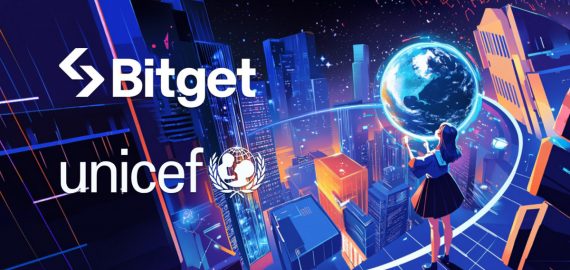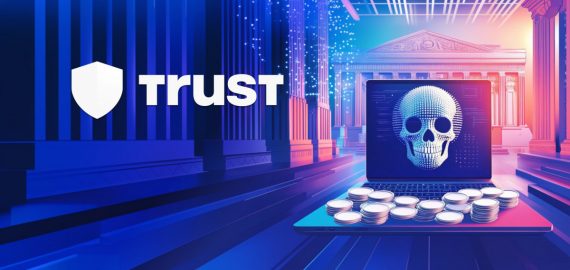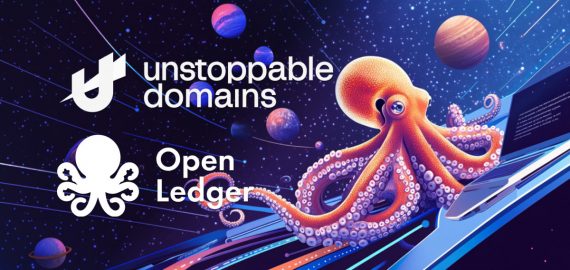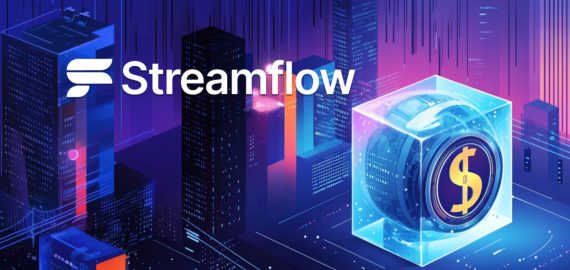Yat Siu Explains How Web3 is Redefining Gaming, Digital Identity, and the Future of Ownership


In Brief
Yat Siu, Co-founder and Executive Chairman of Animoca Brands, discusses Web3’s growth, challenges in bridging Web2 and Web3, and strategic investments in gaming, NFTs, and decentralized technologies.

Yat Siu, Co-founder and Executive Chairman of Animoca Brands, has been a key player in the development of Web3, starting with his involvement in the rise of CryptoKitties. This was his entry point into the world of NFTs and blockchain, which he quickly recognized as having the potential to transform gaming, digital ownership, and online identity.
In this interview, Yat shares his perspective on the growth of Web3, the challenges of bridging the gap between Web2 and Web3, and the strategic investments Animoca is making in gaming, NFTs, and decentralized technologies to shape the future of the industry.
Can you share your journey into Web3?
My official journey into Web3 really began with CryptoKitties. At the time, our studio in Vancouver was heavily involved in helping to build CryptoKitties, and that’s where we first discovered NFTs. This was back in 2017, and at the time, NFTs weren’t really a mainstream concept. Our involvement in CryptoKitties was a pivotal moment for us, and it marked our formal entry into the Web3 space. You could say that it was through NFTs that we got involved in Web3.
Before that, I had always been intellectually curious about Bitcoin and blockchain technology, but I wasn’t an early adopter. I wasn’t an early holder of Bitcoin, for instance, and we didn’t participate in ICOs when they were popular in the early days. We came into the Web3 space after the ICO wave had started to die down. However, we were intrigued by the potential of decentralized systems and blockchain technology, and we quickly realized that Web3 would have a profound impact on gaming, ownership, and digital identity.
Today, we’re deeply involved in Web3, with a portfolio that includes investments in various projects across gaming, NFTs, and decentralized technologies. While we may not be part of the original Bitcoin or Ethereum “OG” tech generation, we are strong believers in the long-term potential of Web3 and the impact it will have on industries globally. We’ve learned a lot along the way, and it’s been exciting to be part of this transformative space from the early days to now.
How has your background in Web2 gaming influenced your approach to building in Web3?
My background in Web2 gaming has had a huge influence on how we approach building in Web3. We come from a gaming background, and that experience has given us a solid understanding of what makes games and platforms successful from a user experience and design perspective. One of the key things we understand is user interface and design, and that’s been incredibly helpful in making the transition easier for Web2 users who are entering the Web3 space.
One of the things we’re often praised for is our ability to explain Web3 concepts to Web2 users in a way that makes sense. Web3 can be complicated and intimidating, especially for people who are used to the traditional internet. Having been part of Web2 gaming companies before, we know how to make complex concepts more accessible and bridge that gap. We’ve essentially become translators or evangelists in the space, helping to bridge the divide between the two worlds.
We’ve also been able to offer guidance to larger Web2 gaming companies that are exploring Web3 and blockchain integration. They often come to us for advice on how to approach Web3 and what kinds of user acquisition strategies to use. Our Web2 background gives us a unique advantage in this regard because we know how to build businesses and engage users in traditional spaces, and we’ve been able to apply that knowledge to the Web3 ecosystem. For example, while Web3 tends to focus on incentives and airdrops for user acquisition, we understand the classic advertising and marketing methods of Web2 and how they can complement the Web3 approach.
Do you think it’s easier to raise a new generation of gamers starting directly in Web3, or is it better to help Web2 gamers transition into Web3?
What we’ve observed is that most of the gamers who are active in Web3 today represent a new kind of gamer. A lot of them come from emerging markets, particularly from places like the Philippines and Indonesia, where players are incentivized to play games in a way that allows them to earn money. These gamers are not the same as those who play popular Web2 games like Minecraft, Roblox, or Fortnite. The types of games and incentives they engage with are quite different.
Web3 gamers often prioritize financial rewards as the main goal, which is a shift from the traditional Web2 gaming mentality. In Web2, gamers generally play for fun, and the idea of making money from gaming is often secondary. However, in Web3, games are designed around a play-to-earn model, and the financial element is the primary motivator for many players.
Games like Off The Grid are interesting because they try to bridge the gap between these two worlds. Off The Grid is very competitive, much like traditional games in Web2, such as PUBG or Fortnite, but it incorporates Web3 mechanics in a way that is abstract and not too overwhelming for Web2 players. This makes it a good example of how Web3 can attract Web2 gamers.
The challenge, however, is that you’re dealing with different cultural and economic mindsets, particularly between regions like Asia and the West. In Asia, players are more accustomed to the idea of monetizing their gaming activities, while in the West, gamers may view the financial aspect as secondary or even less important. Bridging that gap and catering to both types of players will be key as Web3 gaming continues to evolve.
What about onboarding new people into Web3? Can simple games like clickers help attract new users, or are they just about making money?
When it comes to onboarding new users into Web3, the key is finding ways to make the experience fun and rewarding. All types of games—whether simple clickers or complex strategy games—are designed with some kind of incentive structure in mind. The mechanics might differ, but the idea is the same: to engage players by giving them something valuable in return for their time and participation.
Take poker, for example. While poker is ultimately a game that involves money, most people who play it casually at home do it for fun and social reasons rather than because they expect to make a living out of it. The monetary aspect can make the game more exciting, but the primary driver is the social interaction and the challenge.
In Web3 gaming, the early focus on making money often led to a situation where the space was dominated by professional players or people who were gaming purely for financial gain. This made it harder for casual players to enter the space, and it led to a lot of issues, such as cheating, bots, and farming.
The advent of blockchain technology, however, offers solutions to address these problems—such as digital identity verification and anti-fraud measures. If we can find ways to control fraud and create more secure, fair gaming environments, I believe Web3 games will become much more attractive to Web2 gamers who are used to a more traditional gaming experience.
How would you describe the current state of the market? Do you think we’re in a bull market?
Yes, I would definitely describe the current state of the market as a bull market. Bitcoin recently hit an all-time high, and Ethereum, Solana, and other major cryptocurrencies have seen significant price movements. Everything is doing quite well overall, and the market seems to be in a very positive phase right now.
That being said, there are some altcoins that haven’t performed as well as Bitcoin, but that’s largely due to the sheer number of tokens available in the market today. There’s a lot more dilution of attention compared to three years ago when the market was less saturated. What’s really driving a lot of the attention right now are meme coins. Meme coins are capturing a lot of retail interest, just as NFTs did back in 2021.
The cycle we’re seeing now with meme coins reminds me a lot of the way NFTs played out. In 2021, the NFT space was booming, and that’s when Ethereum’s price soared to around $4,000. In turn, these NFT projects started launching meme coins to attract more users, and now meme coins are beginning to launch NFTs to keep the cycle going. It’s all part of the same ecosystem, just with different economic and cultural drivers behind each wave.
Do you think Bitcoin can hit $100,000 in the next few days?
I’m not sure if it’ll happen in the next few days, but I did predict earlier this year that Bitcoin would hit $100,000 by the end of the year, and it’s looking like that could happen soon. Of course, the market is always unpredictable, and we know that Bitcoin can retrace or fluctuate before reaching new highs. But I do believe it will hit $100,000 this year, and we’re seeing the market dynamics play out in a way that could bring it there.
Do you think NFTs right now are gaining a new wave of adoption, or are they still kind of quiet in the market?
First of all, I don’t think NFTs are quiet at all. When you look at the volume of NFT sales, it’s definitely increasing. There’s more activity entering this space again, particularly in gaming. I think the reason NFTs might seem quieter now is that they’re not as loud as meme coins. So, when you’re in a room with a lot of different things happening, it can feel like there aren’t as many NFTs around, but in reality, the other projects and tokens are just louder and have more attention.
What’s really interesting to me, though, is that meme coins are starting to launch NFTs as part of their ecosystems. These meme coin projects, as they become more successful, are finding ways to use NFTs to build and strengthen their communities. That shows the evolving relationship between NFTs and meme coins, and I think we’ll see more of this convergence moving forward.
What inspired Animoca Brands’ partnership with the TON Foundation and Telegram?
If you think about the best distribution platform for crypto, there’s no question it’s Telegram. When we started working with the TON Foundation last year, we immediately saw Telegram’s potential in terms of user adoption and onboarding. You can see how many new users have entered the crypto space through Telegram.
Of course, there are still some issues, like multi-accounting and other challenges that come with large platforms. But that’s something that’s being addressed over time. Despite that, we remain very bullish on the ecosystem. For us, distribution is a key part of how we think about growth, and with Telegram and TON, we see them as one of the best gateways for crypto and Web3. That’s why we’re supporting this partnership and also bringing a lot of our own ecosystems into the TON ecosystem as well.
What’s the most unexpected innovation you’ve seen emerge from a Web3 project Animoca has invested in?
We’ve made over 540 investments, so there are definitely a lot of exciting innovations we’re seeing across the space. But a few stand out. For example, with Mocaverse, one of the most important innovations is their work on a reputation layer. This is an interesting solution to solving Sybil attacks in Web3, which is a critical issue as we look at scaling these systems.
What’s really exciting is that they’ve found a way to create this reputation layer while still preserving the privacy of users, using things like zero-knowledge proofs. It’s an innovative approach that could have a big impact. Another project we’re excited about is Humanity Protocol. It offers a different way of verifying identity through hand scans instead of relying on more intrusive methods like retina scans. It’s less intrusive and more inclusive, and it allows people to use it on their smartphones.
Lastly, Open Campus EDU is a project we’re really excited about because they’re tackling student loans in the DeFi space. They’re working to create better yields and interest rates for students, and that’s a $5 trillion market. Tackling that space in a decentralized way could bring large sums of money into Web3, and we believe it could lead to a more sustainable approach to education financing.
What industries inside Web3 are you most interested in and want to implement within your business?
The focus for us has always been on culture, entertainment, and social networks—essentially everything that defines how we live and interact on the internet. If you look at the most valuable companies in Web2, they aren’t telecoms or infrastructure companies; they’re content-driven companies like Netflix, Facebook, Google, and Apple. These are the companies that create cultural, social, and entertainment experiences.
From early on, we felt that the Web3 ecosystem would be built on similar principles. Even though infrastructure, like L1s and L2s, might seem more important in the early stages, the services and products people actually care about—like gaming, entertainment, and social interaction—will drive the long-term success of Web3. That’s why we’ve made a strategic decision to focus on these areas. We’re constantly looking for solutions that will improve and expand these industries, and that’s why we’ve also invested in things like the Humanity Protocol and L1 and L2 technologies.
What do you think can spark a new wave of Web3 gaming adoption?
One of the great things about gaming is that it only takes one big hit game to change the entire industry. That’s what happened in Web2 gaming, and it can certainly happen again in Web3. We’re already seeing games like Off The Grid that could drive adoption because they appeal to both traditional gamers and Web3 natives.
But I also think there’s another wave coming—meme coin gaming. I believe that meme coins will eventually play a significant role in Web3 gaming by launching their own games or integrating gaming into their ecosystems. The merging of meme tokens and gaming will bring a new wave of interest and adoption, especially as meme coins continue to grow in popularity.
What keeps you motivated while building such a massive ecosystem?
There’s a lot that keeps me motivated. I’m really excited about our mission at Animoca Brands, which is to deliver digital property rights. We truly believe that Web3 can create a better, fairer internet. One of the most exciting aspects of Web3 is its potential to create a new form of capitalism—decentralized capitalism—where people can have more confidence in how markets operate, knowing that they’re more transparent and fair.
A lot of people have lost trust in traditional capitalism because it has become so centralized. With decentralization, Web3 can restore that trust and provide a more equitable marketplace. Also, it’s rare to be in a position where you can help shape an entire industry. At Animoca, we have that ability, and we take that responsibility seriously. It’s both a privilege and a blessing to be part of this transformation.
Disclaimer
In line with the Trust Project guidelines, please note that the information provided on this page is not intended to be and should not be interpreted as legal, tax, investment, financial, or any other form of advice. It is important to only invest what you can afford to lose and to seek independent financial advice if you have any doubts. For further information, we suggest referring to the terms and conditions as well as the help and support pages provided by the issuer or advertiser. MetaversePost is committed to accurate, unbiased reporting, but market conditions are subject to change without notice.
About The Author
Victoria is a writer on a variety of technology topics including Web3.0, AI and cryptocurrencies. Her extensive experience allows her to write insightful articles for the wider audience.
More articles

Victoria is a writer on a variety of technology topics including Web3.0, AI and cryptocurrencies. Her extensive experience allows her to write insightful articles for the wider audience.

















































